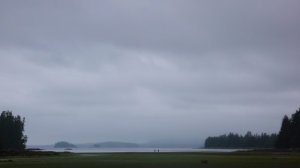ARCHAEOLOGICAL SOCIETY OF BRITISH COLUMBIA
In association with the Anthropology Department of UVic
MAY MEETING
Tuesday, May 19, 2014,
7:30 pm
Cornett Building B129
University of Victoria
ARCHAEOLOGICAL SOCIETY OF BRITISH COLUMBIA
In association with the Anthropology Department of UVic
MAY MEETING
Tuesday, May 19, 2014,
7:30 pm
Cornett Building B129
University of Victoria
GRACE ISLET CONTROVERSY
Abstract: In 2014, controversy arose over construction of a luxury vacation home on a First Nations cemetery at Grace Islet in Ganges Harbour off Salt Spring Island. Responding to the issuance of a provincial Heritage Site Alteration Permit, a coalition of First Nations and non-indigenous allies joined together to protect the cemetery, deploying an array of tactics from lobbying local government and provincial government officials to staging paddles to and around the contested site. In January 2015, these efforts bore fruit when the Government of British Columbia announced that it had acquired that islet and that the site would be remediated, with the half-built home decommissioned and the land restored and stewarded culturally and ecologically. In this presentation, Ben Isitt, who participated in the effort to protect Grace Islet, discusses the politics of First Nations cultural sites in British Columbia today and the ambiguous legal space between the exercise of customary indigenous rights and settler property rights.
Bio: Ben Isitt is a Victoria City Councillor and Capital Regional District director who was involved in the effort to protect the cultural heritage site at Grace Islet. In his professional life, Ben is a historian and legal scholar, currently affiliated with the University of Victoria Faculty of Law.
For information
e-mail asbcvictoria@gmail.com
Please check out our new website @ http://www.asbcvictoria.wordpress.com
And facebook @ https://www.facebook.com/ASBCVictoria





